Biologists refine longline methods in New England, USA
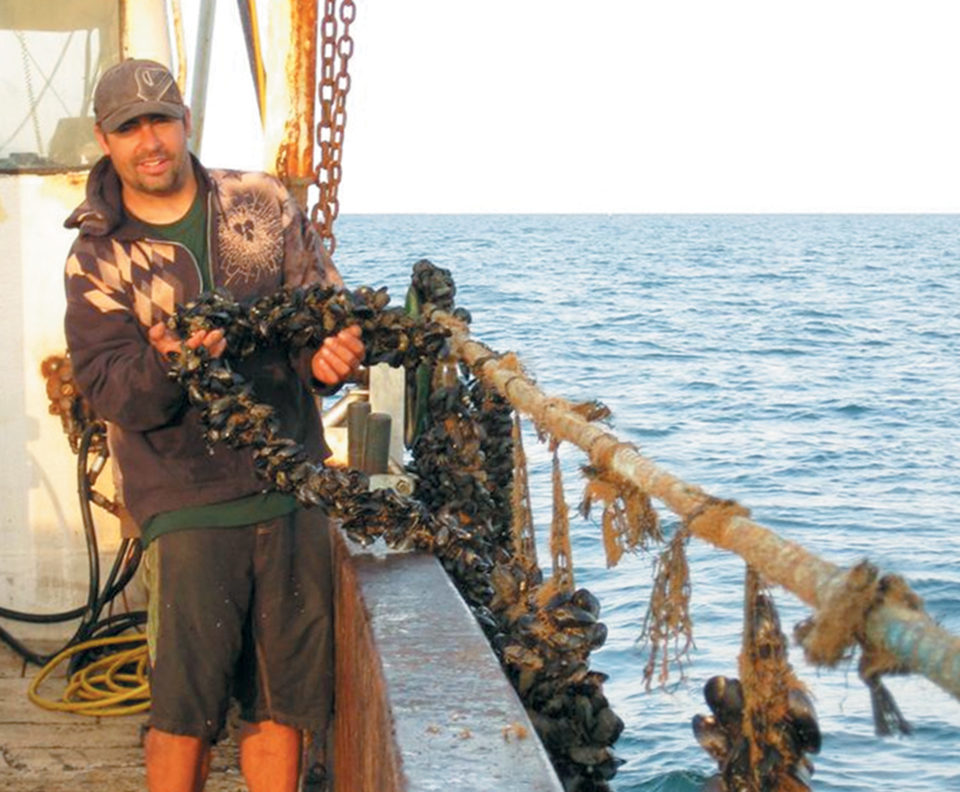
Most mussels around the world are farmed in inshore waters. With decreased space availability and carrying capacities of these sites being reached, more and more operations are looking into offshore longline mussel aquaculture. Researchers at the Marine Biological Laboratory (MBL) in Woods Hole, Massachusetts, USA, are working to find optimal methods for offshore mussel farming in New England.
Mussels in New England
The southern New England region of the United States is an ideal place to grow mussels due to its climate, proximity to markets and reasonable operating costs. The temperate, plankton-rich waters produce market-size mussels in 10 to 12 months, versus 20 months in waters further north. Because of the unique spawning cycles in southern New England, mussels are at their prime – with higher meat yields – during the summer months, when the market is the strongest.
Currently, 85 percent of the demand for mussels in the United States is met by imports from Canadian mussel farmers. The clear demand for mussels could be met by mussels grown within the United States, bringing revenue and jobs to a weakened economy.
Past projects
Previously, Woods Hole Oceanographic Institution and University of New Hampshire looked into mussel farming with mixed results (the former plagued by pea crab infestations). At the start of the MBL-led pilot project in 2008, it was essential to assess the viability of offshore mussel farming in cooperation with fishermen who might ultimately adopt these ventures.
Around the world, many techniques are used to produce mussels, from different socking techniques and lines to differing densities of mussel seed. Canadian socks were used for this project. In Canada, mussels are placed in cotton-bisected, fixed mesh socks hung vertically in the water column from a head rope.
This is an attractive method because untrained labor can easily fill the socks at standardized densities by matching graded seed sizes with various sock diameters. It is also relatively inexpensive – U.S. $0.10-0.15/m – when compared with other socking methods.
From this initial project, the net yield of processed and marketable mussels from the gross weight of the harvested socks was 75 percent. The steamed meat yield of the mussels was 20 percent in late August versus 30 percent in early July. A 30 percent yield is desirable for live markets, with lower percentages usually going into canned products.
Current status
Based on the success of the pilot project, nine longlines are currently being farmed in Rhode Island and Massachusetts with funding from Rhode Island Sea Grant and the Northeast Regional Aquaculture Center. All of the current projects strive to increase the efficiency of offshore mussel farming as well as perfect techniques related to collecting seed, socking and eradication of tunicates, small, invasive encrusting marine organisms.
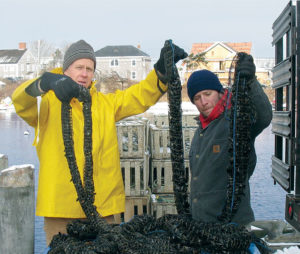
Defining the most effective socking technique is the largest component of the current project. The Canadian socks have advantages, but also require more labor than others, and the socks can only be used once, making them less environmentally friendly.
The most widely used type of sock in New Zealand and Europe is a biodegradable cotton sock with a reusable continuous core rope. The core rope often has uneven frays or loops, providing more surface area to which the mussels can attach. These ropes can be socked mechanically, and their continuity makes them faster to deploy and harvest, although more-skilled labor is necessary to operate the machinery, and the initial cost of the core rope is high.
Both the Canadian socks and the continuous socks can be deployed in two fashions: as single droppers or as continuous droppers, although the single droppers of discrete 3- to 5-m length are used almost exclusively with the Canadian socks. Continuous droppers are socks strung along the head rope, dropping 3 to 6 m below the head rope with 1 m of spacing between each dropper.
The author’s current project will incorporate continuous rope in this fashion, as well as some of the Canadian socks by tying the loose ends in pairs. Previous projects using single droppers exclusively experienced significantly fewer mussels on the lower halves of the socks. This was probably due to whiptailing and fall off. To evaluate this theory, the Canadian socks will be hung in both configurations.
Tunicates
As mentioned previously, fouling of the mussel lines has been a problem in other parts of the world. Tunicates do not directly harm mussels, but they compete for the same food and make the mussels more difficult to harvest and clean for processing.
In Canada, several methods are used to combat tunicate fouling, including freshwater sprays and lime dips. The author’s team is testing various durations of freshwater sprays, freshwater baths, brine baths and acetic acid sprays, followed by an hour of air drying. Preliminary results show freshwater baths followed by air drying was the most effective method.
Perspectives
While these projects hope to optimize the techniques associated with offshore mussel aquaculture, some technical and social issues still need to be addressed. Interest from U.S. fishermen is increasing, but permitting is slow and uncertain, and start-up costs can be substantial. Capital costs can be reduced by using screw anchors and new remote installation technology.
Currently, permitting in some state waters can take months to years and involve dozens of agencies. Some groups are looking at farm sites beyond their states’ 3-mile (4.8-km) boundaries to take advantage of potentially more streamlined permitting in federal waters. To help fishermen assess new business opportunities, the author’s Marine Biological Laboratory has led various workshops, demonstrations and presentations.
(Editor’s Note: This article was originally published in the July/August 2013 print edition of the Global Aquaculture Advocate.)
Author
-
Scott Lindell
Manager, Marine Resources Center
Director, Scientific Aquaculture Program
Marine Biological Laboratory
MRC 315, 7 MBL Street
Woods Hole, Massachusetts 02543 USA
Tagged With
Related Posts
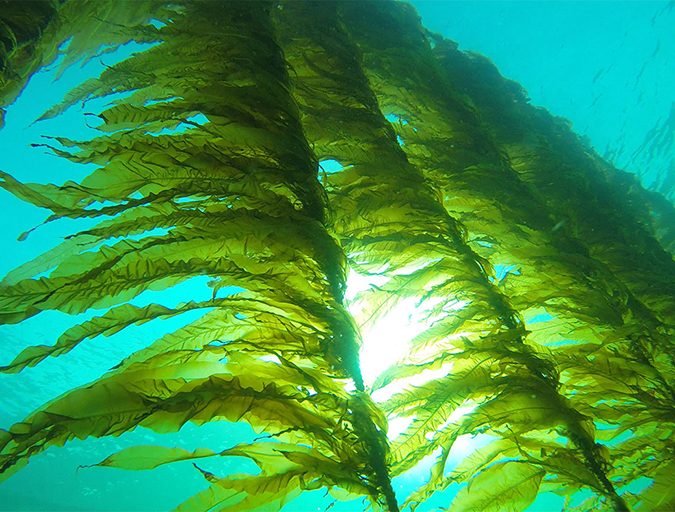
Responsibility
Can aquaculture flourish in a more symbiotic sea?
The 18-month Maribe project has uncovered some promising ideas for promoting growth and jobs within the blue economy. Aquaculture, fingered as one of five key areas for growth, could benefit from collaboration with renewable energies.
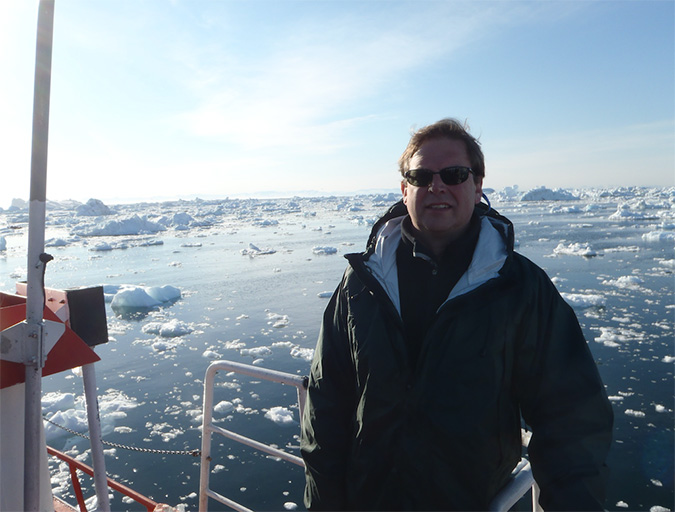
Innovation & Investment
Aquaculture Exchange: Sebastian Belle
The executive director of the Maine Aquaculture Association talks to the Advocate about the diverse and growing industry in his state (oysters, mussels, kelp, eels and salmon) and how aquaculture should be used as a rural development tool.
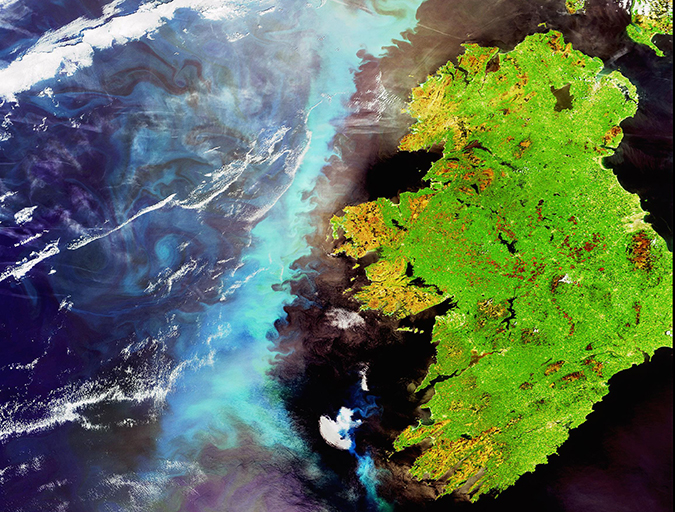
Innovation & Investment
Eye in the sky: Europe employs satellites to advance aquaculture
Copernicus – the European Space Agency’s €4.3 billion Earth Observation System – holds potential benefits for fisheries and aquaculture. The SAFI project is approaching the aquaculture sector about harnessing, and montetizing, this unique service from up above.
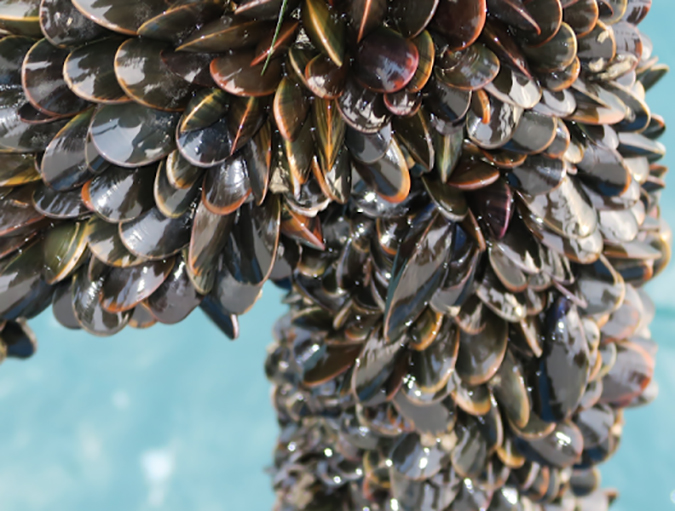
Innovation & Investment
Pioneering U.K. mussel farm channels innovation, ambition
John Holmyard’s family has navigated a complex journey to get their rope-grown mussel farm operational in the waters off southern England. Offshore Shellfish Ltd. has solved the puzzles of bespoke equipment, a perplexing permitting process and the social license to operate.


